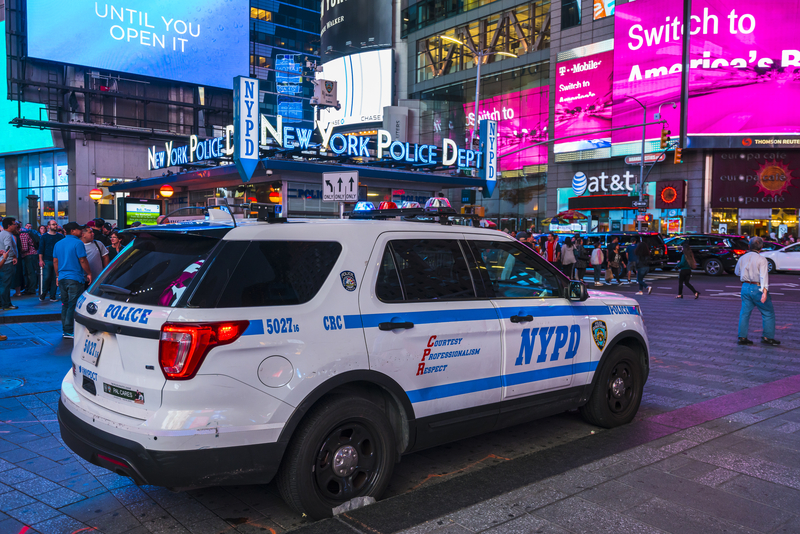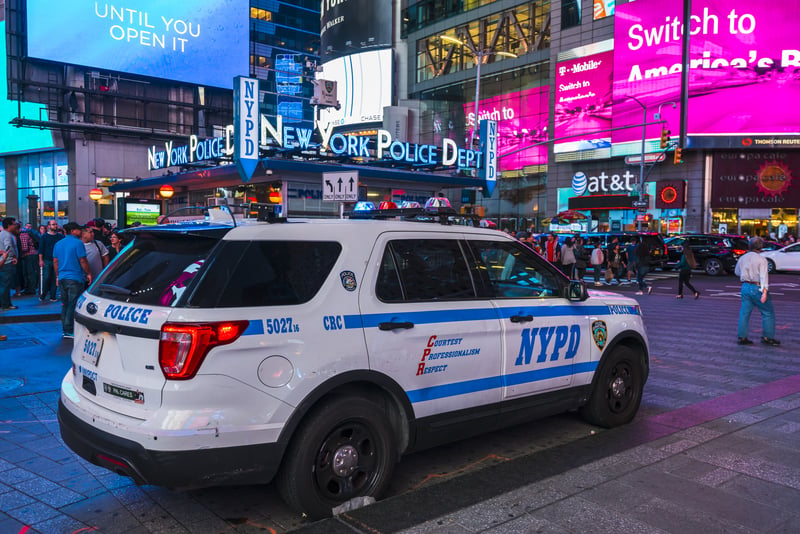
Trenton, NJ – Is America safer now than it was before Kamala Harris and Joe Biden? Is New York City safer? Is New Jersey safer? Is Philadelphia safer?
If you ask people in those areas, they will tell you a different story.
So why does today’s FBI crime report show a decrease in violent crime? The answer is simple. The FBI report is missing key cities and towns across America.
The facts behind this have been well document by the Marshall Project.

Vice President Kamala Harris recently claimed that Americans are now safer than when she and President Joe Biden took office. Citing newly released FBI data, Harris pointed to a significant reduction in violent crime, including the largest-ever decrease in the national homicide rate. On the surface, this sounds like great news—violent crime has dropped for the second year in a row, and the murder rate has seen its biggest decline in 20 years.
However, a deeper look into the FBI’s crime data raises questions about the completeness and reliability of these statistics, largely because many major police departments, including those in some of the largest cities, have not been consistently reporting their crime data.
The Crime Data Gap: What’s Really Happening?
For more than 100 years, the FBI has relied on local law enforcement agencies to submit crime data through its Uniform Crime Reporting (UCR) Program. This system provided an annual snapshot of crime in America and was considered the gold standard for national crime statistics.
But that changed in 2021 when the FBI moved from the Summary Reporting System, which focused on topline numbers like the total number of murders or car thefts, to the more granular National Incident-Based Reporting System (NIBRS).
NIBRS was designed to modernize the way crime is tracked, providing richer details about each incident, including specifics about the victim, the suspect, and the circumstances surrounding the crime. However, this switch caused significant disruption in data collection. Many police departments, especially those in large cities like New York City and Los Angeles, were unprepared for the transition and failed to submit their crime data. According to The Marshall Project, over 6,000 law enforcement agencies, representing nearly one-third of the nation’s total, were missing from the FBI’s national crime data last year.
This data gap means that a quarter of the U.S. population was not represented in the FBI’s crime reports.
Missing Major Cities
The missing data problem is particularly acute in large urban areas, where violent crime rates have historically been higher. For instance, the New York Police Department (NYPD) and the Los Angeles Police Department (LAPD), two of the country’s largest police forces, were not able to submit their 2021 crime data in time for the FBI’s deadline. While both agencies have since begun the process of transitioning to the new reporting system, they have not fully integrated into NIBRS. This creates a significant blind spot in the national crime statistics, as these two cities alone account for millions of people and thousands of reported crimes each year.
As of 2022, the situation had improved somewhat. About two-thirds of law enforcement agencies were included in the FBI’s crime database, a modest increase from the previous year. Some large departments, like Miami-Dade Police, started reporting again, but major gaps remain. In states like Florida and Pennsylvania, fewer than 10% of police agencies are reporting crime data to the FBI.
This patchy reporting paints an incomplete picture of national crime trends.
What Does This Mean for Crime Data?
The incomplete participation in NIBRS means that while the FBI’s crime statistics indicate a drop in violent crime, the full story may be far more complicated. Without data from major urban centers, where crime tends to be concentrated, it’s difficult to draw definitive conclusions about national crime trends. The Marshall Project noted that while some states, like California, saw a significant increase in the number of police agencies submitting data after the old summary system was revived, many other states lagged behind.
This incomplete data could potentially skew the results, making it appear as though crime has dropped more significantly than it actually has. For example, while the national murder rate reportedly decreased by 11.6%, if some of the country’s largest cities—where homicides are more common—did not report their data, the real decline could be less dramatic than the numbers suggest.
The Impact of the Pandemic and Policy Changes
The pandemic and subsequent lockdowns had a significant impact on crime rates, with 2020 seeing a spike in violent crime, particularly homicides. Some experts attribute this to social unrest, economic challenges, and the strains placed on the criminal justice system during the height of the pandemic.
As restrictions eased in 2021 and 2022, many cities began to see reductions in crime, but this recovery has been uneven.
In some cases, cities have implemented new policies aimed at reducing violent crime, including initiatives focused on community policing and violence prevention. The Biden administration has taken steps to support these efforts, allocating federal funds to local police departments to help address rising crime rates. However, with major gaps in crime reporting, it’s difficult to measure the impact of these policies accurately.
The Political Narrative
Kamala Harris’ claim that America is “safer now” ties into a broader political narrative ahead of the 2024 elections. Crime has been a central issue in political discourse, and both the Biden administration and their opponents have used crime statistics to make their case. For the White House, the FBI’s reported decline in violent crime offers a chance to highlight their success in addressing public safety issues. However, critics argue that the incomplete data undermines these claims, making it harder to assess whether Americans are truly safer today than they were a few years ago.
For instance, some opponents point to the rise in property crimes, such as motor vehicle theft, which increased by 12.6% according to the FBI’s latest data.
Others highlight the persistence of high crime rates in certain areas, particularly in cities that have yet to fully transition to the new reporting system. These gaps in the data complicate the Biden administration’s ability to present a clear picture of progress on crime reduction.
While the FBI’s latest data indicates a significant reduction in violent crime and homicides, the incomplete reporting from major police departments casts a shadow over these findings. With many large cities missing from the data, it’s difficult to say with certainty how much crime has actually decreased across the country. While the overall trend may point to an improvement, the lack of comprehensive reporting from major urban areas makes it hard to fully trust the numbers.
The Biden administration can certainly point to the positive trends reflected in the FBI’s data, but the incomplete picture complicates their ability to claim a full victory on crime reduction. As more police departments catch up with the new NIBRS reporting system, a clearer understanding of national crime trends may emerge. Until then, any claims about nationwide crime reduction should be viewed with caution. While crime is undoubtedly down in many areas, the lack of comprehensive data from key cities like New York and Los Angeles leaves room for skepticism.

